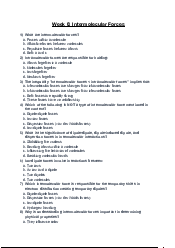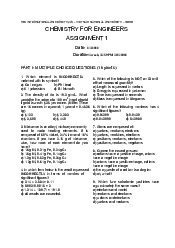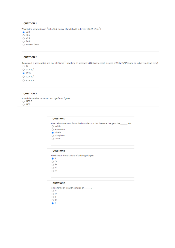




Preview text:
lOMoARcPSD|364 906 32 MEASUREMENT -
Is the comparison of a physical quantiy to be measured with a unit of measurement
1. Precision : refers to the closeness of the set of values obtained from identical measurements of a quantity
2. Accuracy : refers to the closeness of a single measurement to its true value
3. Precision and Accuracy : are both achieved when results are close to each other and to the desired value
4. Significant figures : Are those digits in a measured number (or result of a calculation with
measured numbers) that include all certain digits plus
a final digit having some uncertainty. -
The number of significant figures in a measurement depends on the measuring device -
Normally to one tenth of a smallest unit -
Greater number of significant figures, higher precision -
Number of significant figures refers to the numbers of digits reported for the value of a
measured or calculated quantity, indicating the precision of the value -
Decimal notation ( kí hi u th p phân ) : + common, - awkward to represent very large and/orệ
ậ very small numbers – easy mistakes
• Rule 1 : Disregard all initial zeros, all remaining digits including terminal zeros and zeros
between nonzero integers are significant
Examples: 0.03050 => 4 significant figures
• Rule 2: for addition and subtraction, the smallest number of digits to the right of the
decimal set the significant
• Rule 3: for multiplication and division, the smallest number of significant digits determines the significance Example question: -
Number of significant figures refers to the number of digits reported for the value of a
measured or calculated quantity, indicating the precision of the value -
A/An exact number is a number that arises when you count items or sometimes when you define a unit.
One dozen : 1 tá – 12 đ n vơ ị MATTER
Matter Is anything that has mass and occupies space
States of matter: 4 states ( according temperature increasing) : solid -> liqid -> gas -> plasma - Solid :
High density (tightly packed close together)
Fixed in position ( can vibrate only)
Retains a fixed volume and shape
Not easily compressible Does not flow easily lOMoARcPSD|364 906 32
They are difficult to be pressed, volume and shape are stable, and theirs particles do not float easily +
Crystalline solids (châất rắấn kếất tinh) : particles arranged in an orderly geometric pattern ex: salt and diamonds
+ Amorphous solids ( châất rắấn vô đ nh hình) : ị
randomly distributed without any
long-range pattern ex: plastic, glass, charcoal - Liqids
Closely packed ( medium desnsity)
Some ability to move around and slided over each other
Retains a fixed volume
Takes the shape of the container Not easily compressible
They are not easily compressed, their volume is maintained, flow easily and
become the shape of its container. Flow easily Solid Liquids
Highly density – tightly packed close
Medium density – closely packed Fix volume and shape Fix volume
Not easily compressible
Not easily compressible Does not flow easily Flow easilly - Gases + complete freedom
Constantly flying around, bumping into each other and container
+ a lot of empty space between particles
+ assumes the shape and volume of its container + is compressible + flow easily - Plasma + nuclei + electrons lOMoARcPSD|364 906 32 - Atoms (nguyến t ): ử
the smallest particle that an element can be subdivided into and
retain the chemical properties of that element -
Compound (h p châất) : a substance with constant composition that can be broken down
intoợ elements by chemical processes -
Molecules ( phân t ) : a bonded collection of ử two or more atoms of the same or different elements
The smallest particle of a compound having the properties of a compound. ATOMS AND MOLECULES lOMoARcPSD|364 906 32
Chemistry is the science that seeks to understand the behavior of matter by studying the
behavior of atoms and molecules.
Chemistry is the study of the properties, composition, and structure of matter, the changes it
undergoes, and the energy liberated or absorbed during those changes. -
Physical properties are the characteristics of matter that can be changed without changing its composition
+ characteristics that are directly observable (quan sát tr c tiếếp)ự
+ Changes that alter the state or appearance of the matter without altering the composition
+ State changes : boiling / condensing , melting / freezing , Subliming + dissolving :
Ex : The boiling of water: the water molecules are separated from each other, but their
structure(cấếu trúc) and composition( thành phấần) do not change. -
Chemical properties are the characteristics that determine how the composition of matter
changes as a result of contact with other matter or the influence of energy o characteristics
that describe the behavior of matter
o composition change of the matter: the atoms that are present rearrange into new
molecules, but all of the original atoms are still present + rusting
+ processes that release losts of energy (ex burning) -
Chemistry = Matter and its changes Mass is conserved
Energy is required to affect change -
Energy is anything that has the capacity to do work or generate heat.
There are things that do not have mass and volume A category of such things is called energy -
Although chemistry is the study of matter, matter is effected by energy. -
“Matter is neither created nor destroyed in a chemical reaction” -
“Energy can neither be created nor destroyed.” -
The combined amount of matter and energy in the universe is constant. -
Potential energy is energy that is stored by virtue of position above ground ( reference ≡ point) -
Chemical potential energy: energy is due to chemical interaction (bonding: nuclei-nuclei,
nuclei-electrons, electronselectrons) -
Kinetic energy is energy of motion, or energy that is being transferred from one object to another. -
Temperature = a measure of the average kinetic energy of the particles that make up the system. -
Thermometer = device for the measurement of temperature. -
When a change results in the release of energy it is called an exothermic process. lOMoARcPSD|364 906 32
An exothermic chemical reaction occurs when the reactants have more chemical potential
energy than the products.
When a change requires the absorption of energy it is called an endothermic process.
An endothermic chemical reaction occurs when the products have more chemical potential
energy than the reactants.
Heat capacity is the amount of heat a specific substance must absorb to raise its temperature by 1 °C.
Specific heat (capacity) = heat capacity of 1 gram of the substance.
Specific heat is the amount of energy required to raise the temperature of one gram of a substance by 1 °C.
Ch màu xanhữ : chú ý, có phâần điếần t các bài t p t làm trến m ngừ ở ậ ạ
Ch màu đữỏ/ bôi vàng : có trong quiz c a thâầy Lâmủ




